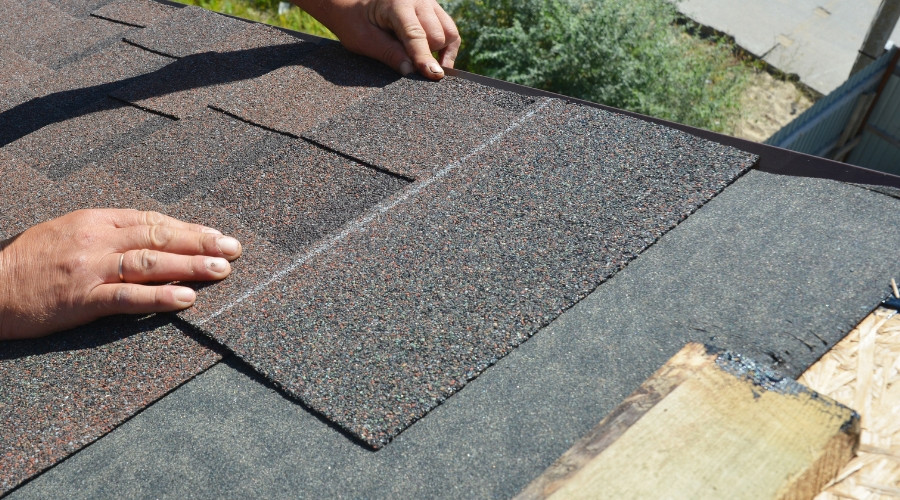When Is a Roof Replacement Needed?
Wondering about the signs to replace the roof? Overlooking early roofing problems can lead to escalating costs, interior damage, and avoidable stress. The good news: a clear set of indicators helps determine when roof replacement is the safer, more cost-effective path. As an overview, this guide explains how age, recurring leaks and growth, and structural or storm damage signal the need for roofing replacement, along with considerations that point toward roof installation instead of repeated repairs.
The Roof Has Reached or Exceeded Its Lifespan
Every roof has a practical service life influenced by material type, installation quality, ventilation, and ongoing care. As a roof ages, protective layers gradually wear down, sealants lose resilience, and shingles or panels become more vulnerable to wind uplift and water intrusion. Even without visible roof damage, older systems often show declining performance through subtle signs like curling edges, granule loss on asphalt shingles, or fading and surface wear that suggest reduced protection.
Maintenance history matters. Roofing that has endured clogged gutters, heavy debris, or delayed repairs typically deteriorates faster than well-maintained systems. Records from past roof installation work, building permits, or prior inspection notes can help estimate age and condition. When a roofing system nears the end of its expected lifespan—or has surpassed it—scheduling a thorough evaluation is wise. In many cases, roofing replacement prevents recurring issues, eliminates weak points, and sets the stage for stronger weather resistance. Opting for a planned roof installation also avoids the premium costs and disruption associated with emergency work.
Recurring Leaks or Mold Growth
 Persistent leaks signal deeper concerns than a single loose shingle or minor flashing flaw. When water stains reappear after patches or when multiple rooms show symptoms, the problem often extends across wider sections of the roof. Repeated moisture finds pathways under shingles and along fasteners, gradually saturating underlayment and decking. Over time, this hidden moisture can foster mold growth, compromise insulation, and weaken structural components—clear indicators that roof replacement may be more practical than continued spot repairs.
Persistent leaks signal deeper concerns than a single loose shingle or minor flashing flaw. When water stains reappear after patches or when multiple rooms show symptoms, the problem often extends across wider sections of the roof. Repeated moisture finds pathways under shingles and along fasteners, gradually saturating underlayment and decking. Over time, this hidden moisture can foster mold growth, compromise insulation, and weaken structural components—clear indicators that roof replacement may be more practical than continued spot repairs.
Organic growth compounds the risk. Moss, algae, and mold trap moisture against roofing materials, keeping surfaces damp and accelerating deterioration. As these organisms spread, shingles lose adhesion, edges lift, and seams become more susceptible to intrusion. Left unaddressed, such conditions escalate from cosmetic concerns into widespread roofing damage. A comprehensive assessment can determine whether targeted repairs are still viable or whether a full roofing replacement provides a better long-term solution. Transitioning to a new roof also allows for improved ventilation, underlayment upgrades, and flashing details that reduce the likelihood of future leaks.
Sagging or Damaged Roofing
 Sagging rooflines, spongy areas underfoot, or dips visible from the ground indicate structural issues that call for immediate attention. These signs often point to compromised decking, damaged rafters, or prolonged moisture exposure beneath the surface. Sagging does not correct itself; without intervention, loads can shift and roofing damage can spread. In such cases, roof replacement—paired with repairs to underlying framing—restores structural integrity and helps prevent additional interior damage.
Sagging rooflines, spongy areas underfoot, or dips visible from the ground indicate structural issues that call for immediate attention. These signs often point to compromised decking, damaged rafters, or prolonged moisture exposure beneath the surface. Sagging does not correct itself; without intervention, loads can shift and roofing damage can spread. In such cases, roof replacement—paired with repairs to underlying framing—restores structural integrity and helps prevent additional interior damage.
Severe weather can accelerate the need for action. Storm damage from high winds, hail, or wind-driven rain can crack shingles, dent metal panels, strip protective granules, or lift sections of roofing, allowing water to migrate beneath the surface. Even minor impacts across a wide area can reduce the roof’s ability to shed water effectively, making future leaks more likely. After significant weather events, a professional inspection helps reveal the full scope of storm damage, from torn flashing to weakened sealant lines. When deterioration is extensive, roofing replacement with quality roofing installation practices ensures a tighter, more resilient system that stands up better to future storms.
About JBX Roofing
JBX Roofing provides top-rated, friendly, and professional roofing services in Philadelphia and the neighboring areas. They offer free estimates and same-day service, so call them today for roof installation and replacement in Philadelphia, PA.




